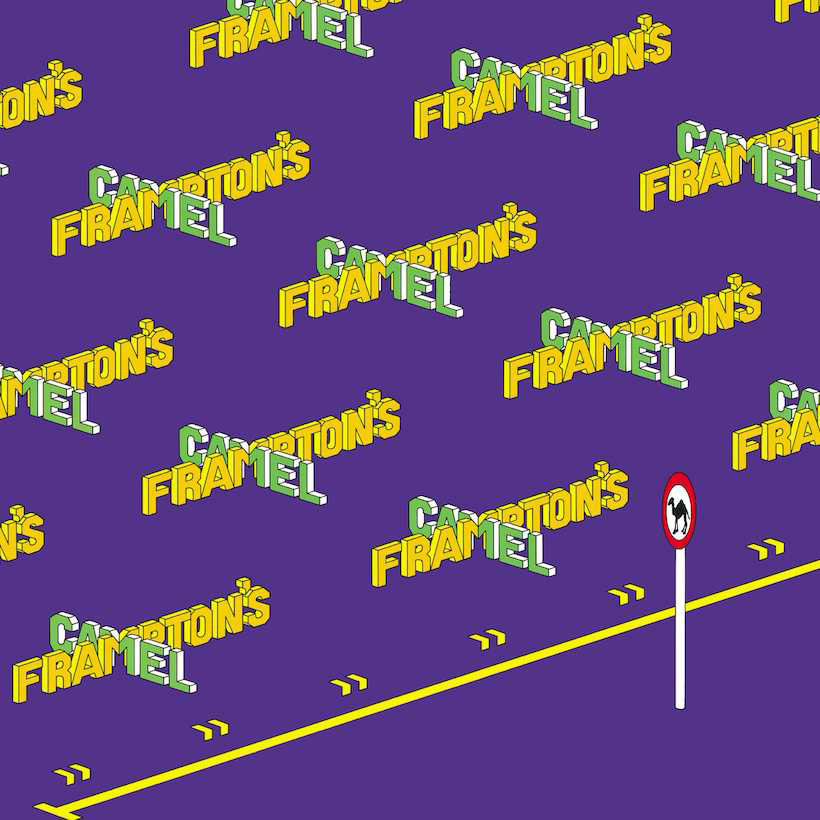While legions of fans first became enamored with Peter Frampton in 1976 with the release of the brilliant Frampton Comes Alive, just three years earlier, Frampton had released Frampton’s Camel on A&M Records on October 20, 1973.
When Peter Frampton was labeled the Face of ’68 by Rave magazine he was with The Herd, a pop-oriented band who nevertheless produced some classy singles. In April 1969 Frampton left the Herd to form the “supergroup” Humble Pie with Marriott on guitar and vocals, Jerry Shirley on drums, and Greg Ridley on bass. After four albums Frampton quit Humble Pie in October 1971 to go it alone, releasing the appropriately titled Wind of Change the following year.
He then formed Frampton’s Camel to tour the US in support of his debut – their first public appearance was at The Academy of Music, New York in September 1972 supporting The J Geils Band. In December 1972 the band went into Electric Lady Studios in New York to begin recording the album that became Frampton’s Camel.
A movable feast
Frampton’s band was a movable feast throughout the early 1970s, but at this time it was future Blockhead and former Animal Mick Gallagher on keyboards and Hammond B-3, bass player Rick Wills (formerly with Cochise and later with stadium rockers Foreigner), and American drummer John Siomos, whose credits by this time had included the brilliant “Hello It’s Me” with Todd Rundgren. For this album, Frank Carillo, an American musician who had also played on Wind of Change, was drafted in to play acoustic guitar and backing vocals.
Frampton’s Camel is classic early 1970s rock, but with a difference. It includes some outstanding melodic songs – always a trademark of Peter’s career. The album opens with the funky “I Got My Eyes On You” written by Frampton, and while it is very definitely “of its time,” it is completely indicative of what made both this album and Frampton so appealing. “All Night Long” is one of the two co-written songs on the album; this one features Gallagher as well as some gorgeous guitar work. It was also one of the two tracks released as a single, but it failed to dent the charts on either side of the Atlantic.
An ear for great songs
Track 3 is the familiar (that is, if you came to Peter via Frampton Comes Alive) “Lines on My Face,” a trademark Frampton ballad with a tingling guitar solo and an emotional vocal. It’s followed by “Which Way The Wind Blows” that harks back to the gentler side of Humble Pie and their country-rock influences with the addition of another sumptuous melodic guitar solo. It was also released as a single at the time but also did nothing on the charts.
Frampton has always had an ear for great songs to cover, and on this album, it’s Stevie Wonder’s “I Believe (When I Fall in Love It Will Be Forever)” that had been released on Talking Book a couple of months before Frampton’s Camel entered the studio. It closes side one of the original LP and imbues the original with something fresh, no mean feat when covering Stevie Wonder.
Side 2 of the LP opens with “White Sugar,” a definite nod to the Stones and their classic “Brown Sugar” in title and in something of the feel of the track that has a great piano solo from Gallagher. “Don’t Fade Away” is a return to the melodic rock ballad style that Frampton is so good at. Similarly, “Just the Time Of Year” emphasizes what a very good songwriter Frampton had already become.
Ready to step into the spotlight alone
The album closes with “Do You Feel Like We Do,” written by the entire band, and a track that would go on to become one of the standout cuts on Frampton Comes Alive, where it also closed side 4 of the double LP. What’s not to love about this track? It is easy to hear why it translated into such an excellent stadium rocker. A great riff allows it to build and build, and that Gibson rings out loud and clear.
Ultimately, with no hit singles, Frampton’s Camel struggled to sell in large numbers after its release in October 1973, although it did eventually make No. 110 on the Billboard chart where it hung around for half the year. In retrospect, it obviously deserved way better, and with the benefit of hindsight, it’s the solid, grounded stepping-off point for Frampton’s subsequent success. His songwriting and guitar playing had matured so much by this point, giving him the confidence perhaps to step into the spotlight alone and assume superstar status.
Listen to the best of Peter Frampton on Apple Music and Spotify.



